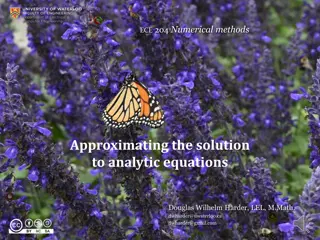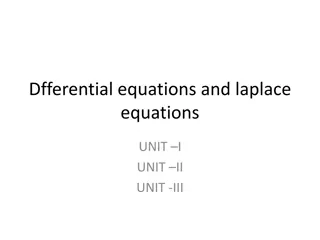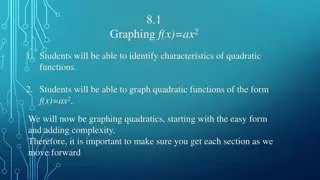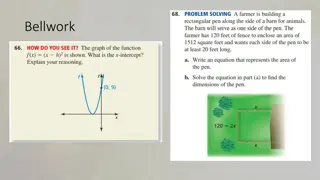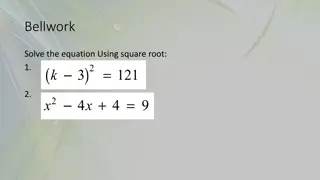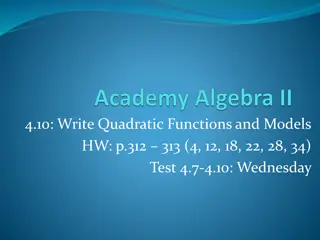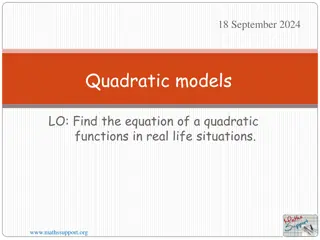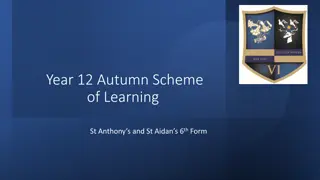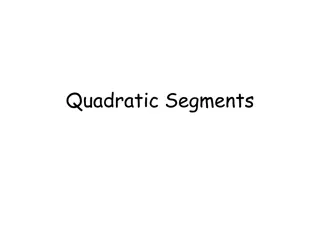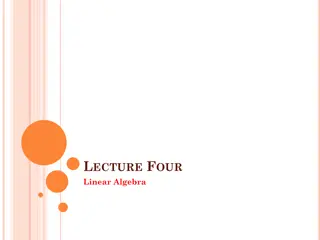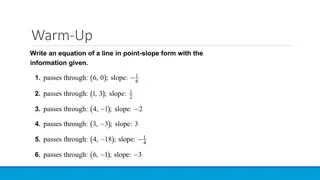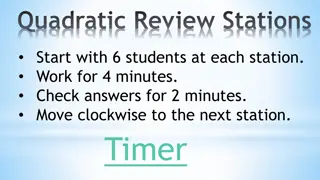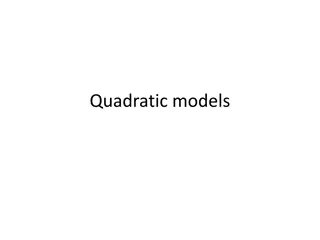Quadratic Equations and Functions
Quadratic equations and functions involve finding the greatest common factor (GCF), multiplying by a constant, and identifying multiples that add up to the coefficient of the linear term. Learn how to simplify and factor quadratic expressions, distinguish between quadratic and linear equations, and grasp the characteristics of parabolas and lines when graphed.
Download Presentation

Please find below an Image/Link to download the presentation.
The content on the website is provided AS IS for your information and personal use only. It may not be sold, licensed, or shared on other websites without obtaining consent from the author.If you encounter any issues during the download, it is possible that the publisher has removed the file from their server.
You are allowed to download the files provided on this website for personal or commercial use, subject to the condition that they are used lawfully. All files are the property of their respective owners.
The content on the website is provided AS IS for your information and personal use only. It may not be sold, licensed, or shared on other websites without obtaining consent from the author.
E N D
Presentation Transcript
Quadratics Daniela Morales Leonhardt
1. Find the GCF (if possible)* *If there is a GCF, divide the equation by it. 2. Multiply ac 3.Find the ac s common multiples that add up to b. 4. Put both of those numbers over a. 5. Reduce if you can.
Problem 1: 2x +6x-4 GCF: 2. =7 Multiples of 12 4 3=12 4+3=7 12x +14x+4 2 6 6 =7 Multiples of 12 6x +7x+2 4 3=12 4+3=7 Factors= 2/3, 1/2 6 2= -12 (ac)
Step Work Result GCF? If so, simplify. No 2x -9x7 a c 2 7= 14 14 Multiples that add up to b -7 + -2 -7 + 2= -9 Multiples over 2, simplify. -7/2 & -2/2. Simplified: -7/2, -1. Answer Factors: -7/2, -1.
Step Work Result GCF? Simplify! YES! 4! 3x +4x+1 a c 3 1 =3 Multiples that add up to =b 3 &1 3+1=4 Multiples over 2, simplify? No simplification needed. 3/2, 1/2 Answer Factors: 3/2, 1/2
A quadratic function looks like this: Characteristics: It s a parabola when graphed. They contain a squared number. A can NEVER = 0. Linear equations are y=mx+b. When they re graphed, they make up a line. Also, in a linear equation x and y don t have exponents.
NO! 7x +9x-4 x-8x+11 VS. WHY? This equation is in ax +bx+c form, it DOES have squared numbers and a doesn t equal zero. WHY NOT? This equation has no squared numbers, making it impossible for this equation to be quadratic.
4x+12 NO Why not? Because there s no a, or a equals zero. There are no squares, and there s no possibility for this to be graphed as a parabola.
3x+12x+4 y=3x+11 QUADRATIC LINEAR 1. y=mx+b This equation follows all characteristics. 1. Has a squared number 2. ax +bx+c 3. a doesn t equal zero 4. Graphed into a parabola. 2. no squares or powers 3. graphed into a line.
Linear Quadratic http://images.google.com/imgres?imgurl=http://ritter.tea.state.tx.us/student.assessment/resources/online/2006/grade10/math/images/55graphicaa.gif&imgrefurl=http://ritter.tea.state.tx.us/student.assessmen t/resources/online/2006/grade10/math/10math.htm&usg=__VmDnihC7aE4frjM- xlDfT6KPzA8=&h=310&w=311&sz=7&hl=en&start=0&zoom=1&tbnid=TvnCCRKKzjZRTM:&tbnh=116&tbnw=116&ei=DfhRTY7nIsT68AbisLnRCQ&prev=/images%3Fq%3Dgraphed%2Bline%26hl%3Den%26gbv% 3D2%26biw%3D948%26bih%3D489%26tbs%3Disch:1&itbs=1&iact=hc&vpx=451&vpy=180&dur=456&hovh=168&hovw=168&tx=125&ty=106&oei=_vdRTcLGH4zBtgfo2ojxCg&esq=7&page=1&ndsp=15&ved=1t:4 29,r:7,s:0 http://images.google.com/images?hl=en&source=imghp&biw=948&bih=489&q=parabola&gbv=2&aq=f&aqi=g10&aql= &oq=
Set in graphing form: a(x+b) +c Determines the parabola s STEEPNESS. a+ direction goes up a- direction goes down A Moves the parabola s vertex either to the left or right. B+ moves left B- moves right (opposite directions) B C Moves vertex upward or downward. c- down, c+ up
Set y=0 GRAPH THE FUNCTION 1. 2. - - - - - - Make a t table find the vertex (or origin) of the parabola using the formula b/2a Pick 3 points on one side of the vertex Fill in for x to find y in the function GRAPH! Find the points reflected from the other side of the vertex 3. Find the solution (the 2 points where the parabola meets the x axis. In case the parabola doesn t cross the x axis, there is NO SOLUTION.) Solution: the x values that fill in for the function for it to equal 0.
Parabola never touches the X axis. Is there a solution? NO
1. Get x by itself. 2. Check that there are no x s by themselves 3. find the sq. root of both sides. 4. REMEMBER to use !!
Isolate x 3x +12=21 x +4=7 x =3 NO Any other x s? Find the Sq. Rt. of both sides. X= 3
Isolate x 6x +24=36 x +4=6 x =2 NO Any other x s? Find the Sq. Rt. of both sides. X= 2
Isolate x 3x +21=33 x +7=11 x =4 NO Any other x s? Find the Sq. Rt. of both sides. X= 4
1. Get a=1 2. Find b and divide it by 2 3. Square it. 4. factor (x + b/2)
make x=1 isolate c complete the square add b/2 to both sides find the sq. roots of both sides
Theyre the numbers localized inside the square root in the quadratic formula. x= -b b -4ac 2
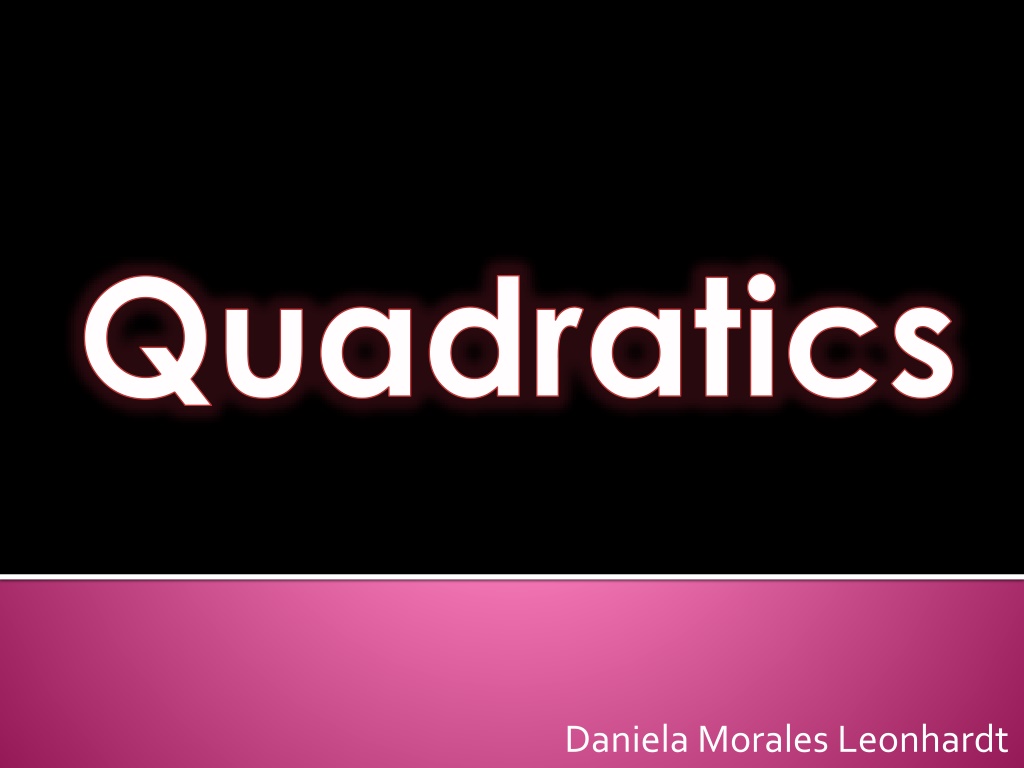
 undefined
undefined







